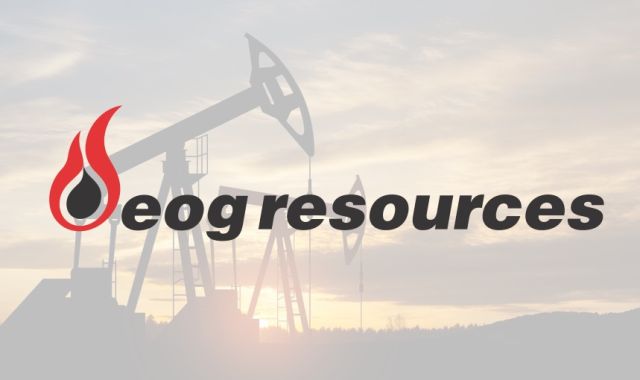
The well is a stepout from where EOG had been exploring, which was in southwestern Dawson. (Source: Shutterstock/ EOG Resources)
EOG Resources Inc.’s new Dean formation well in a southeastern Dawson County, Texas, stepout produced 35,217 bbl in its first month online in the new play, according to Texas Railroad Commission (RRC) data.
The Panther Unit M #1H had been completed in August of 2021 but was shut in until this March. In addition to oil, its first-month gas production in March was 13 MMcf, according to the RRC.
Depth is approximately 9,000 ft. The RRC files did not indicate a completed lateral length or an IP. An RRC GIS viewer indicates the lateral is some 2.5 miles.
The well is a stepout from where EOG had been exploring, which was in southwestern Dawson.
The operator has not publicly commented on its work in the far northern Midland Basin, but told investors in May it is working on a “stealth play” without identifying the play’s location.
‘Technology has evolved’
J.P. Morgan Securities analyst Arun Jayaram asked Jeff Leitzell, EOG’s COO, about the new, unidentified play on June 17 at a J.P. Morgan energy investment conference.
“Normally we don't really pull back the curtain until we actually get to a point of appraisal,” Leitzell said.
He did confirm, however, that EOG is looking into multiple opportunities across the U.S. “where we are [either] just appraising it from a technical aspect and you really don't have to put a lot of dollars into it, or … we are allocating small amounts of capital for exploration.”
On top of unexploited areas, “we're also looking for bypassed opportunities,” he added.
Much of the rock in the Lower 48 has already been drilled throughout the history of E&P, and there is log and other data from those holes. And in this century, a great deal of rock has been looked at with horizontal holes.
“But the thing is, a lot of [the tight-rock formations] were drilled through 10 [years] or 15 years ago—maybe 20 [years] or 30 years ago—and technology has evolved so much that you can go in and you can drill horizontal wells in these and exploit [them with] that technology and you can get just absolutely outstanding returns,” Leitzell said.
In terms of having U.S. prospects, EOG is “in an absolute great place. I think it is probably the most robust prospect portfolio we've had in the history of the company,” he said.
Not Wolfcamp
Also targeting the Dean formation in Dawson County is SM Energy.
Herb Vogel, president and CEO, told investors in May that “there's prospectivity in the Wolfcamp A” underlying Dean in SM’s leasehold in southwestern Dawson.
But “I would say we are not counting that.”
Among SM’s initial tests, the vertical in one was initially drilled below the Dean to take a look at underlying formations, such as the Wolfcamp. It was plugged back and a lateral was kicked off in Dean.
“If we're surprised that thermal maturity [in Wolfcamp A] is higher for some reason there than we expect it to be, that would be great news,” Vogel said.
“But we're really counting on this being more of a migrated-oil play.”
In that, laterals tap oil that soaked into the Dean sandstone from other zones in the northern Midland Basin.
SM’s four-well test of the new play was drilled earlier this year. Data remains in confidential status in RRC files.
The operator picked up the Dawson leasehold—it calls it its Klondike area—last summer from Midland-based Reliance Energy, gaining 20,750 net acres for $93.5 million.
Historically, production from southeastern Dawson targeted the Spraberry, overlying Dean. In southwestern Dawson, though, production has historically been from Dean, according to a 2018 report at the Colorado School of Mines.
Not Canada
Leitzell said EOG is looking at exploration opportunities abroad as well. It already operates offshore Trinidad and is exploring offshore Australia.
“We're extremely excited. We think there's going to be a lot of opportunity internationally,” he said.
“We have an international group in our headquarters that's constantly exploring. And I think they've got a prospect list about as robust as we've ever seen.”
Canada isn’t interesting right now, though, he said.
“What we've really seen is … the overall cost structure—how services and other things work in Canada—can be tough to actually compete with the [Lower 48’s] portfolio.”
Recommended Reading
Appeals Court Rules in Favor of FERC-Permitted Indiana NatGas Line
2025-01-08 - “As night follows day, an environmental challenge follows the approval of a natural gas pipeline,” a Court of Appeals, D.C. Circuit panel said in ruling in favor of a Boardwalk Pipeline expansion project.
Venture Global’s Calcasieu Pass LNG Project Gets Boost from FERC
2025-02-07 - The Federal Energy Regulatory Commission released a report responding to an appellate court’s questions over Venture Global LNG’s Calcasieu Pass 2 project.
DOE Secretary Wright Grants Delfin LNG Extension for Exports
2025-03-10 - Delfin LNG's floating LNG export project in the Gulf of Mexico is authorized to export up to 1.8 Bcf/d, U.S. Energy Secretary Chris Wright said at CERAWeek.
South Texas LNG Projects Get FERC Permits Back
2025-03-19 - The court that vacated Glenfarne’s Texas LNG and NextDecade’s Rio Grande LNG permits in the summer has reinstated the documents while the government amends the originals.
Manufacturers Urge FERC to Study Gas Pipeline Capacity Needs
2025-02-04 - Heavy industry is the first to be impacted when there is inadequate supply of natural gas, the Industrial Energy Consumers of America (IECA) argued in a letter to federal regulators.
Comments
Add new comment
This conversation is moderated according to Hart Energy community rules. Please read the rules before joining the discussion. If you’re experiencing any technical problems, please contact our customer care team.






